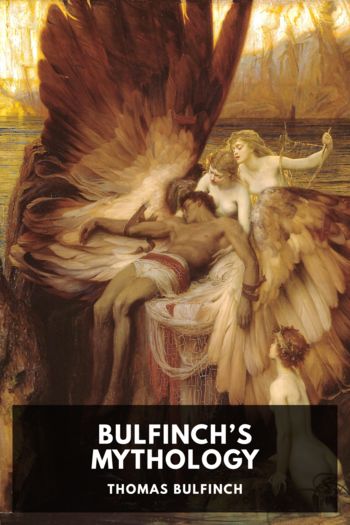Mayan Calendar Prophecies: The Complete Collection of 2012 Predictions and Prophecies, Gary Daniels [the kiss of deception read online txt] 📗

- Author: Gary Daniels
Book online «Mayan Calendar Prophecies: The Complete Collection of 2012 Predictions and Prophecies, Gary Daniels [the kiss of deception read online txt] 📗». Author Gary Daniels
Interestingly, depictions of Medusa are also strongly similar to the Aztec god Tlaltecuhtli, who famously appears in the center of the Aztec Calendar Stone. According to Wikipedia:
“In one of the Mexica creation accounts Tlaltecuhtli is described as a sea monster who dwelled in the ocean after the fourth Great Flood, an embodiment of the raging chaos before creation. Quetzalcoatl and Tezcatlipoca, in the form of serpents, tore [her] in half, throwing half upwards to create the sky and stars and leaving the other half to become the land of the earth.”[141]
The similarities between the myth of Tlaltecuhtli and those of Rahu, Medusa and the Cosmic Crocodile are obvious. Again we have a story of a deity being torn in half with one part remaining in the heavens and one part coming to Earth. By placing the face of Tlaltecuhtli in the center of the Aztec Calendar Stone or Stone of the Fifth Sun it is suggestive that the Aztecs believed she would play some part in the end of the Fifth Sun, our current era.
Tlaltecuhtli as seen in the center of the Aztec Calendar Stone (Courtesy Wikipedia)
A large statue of Tlaltecuhtli was recently unearthed in Mexico which had even greater similarities to the previous Medusa/gorgon image. This Tlaltecuhtli had the curly or spiral hair of Medusa along with the outstretched tongue.
Sculpture of Tlaltecuhtli showing the Medusa-like curly hair and extended tongue.
What can account for such strong similarities between how these three mythological characters, Rahu, Medusa and Tlatecuhtli, were portrayed across three separate continents? The similarities in the myths can be readily explained by the fact that the ancient people of the world all witnessed the same event in the night sky and simply recorded what they saw. But there is no such explanation for why they would all choose to depict this character in identical ways. This strongly suggests there was contact between these cultures at some point in the distant past. The Greeks and Hindus could certainly have had contact that would explain the similarities in depictions of Ramu and Medusa. Yet what explains these same similarities in the depiction of Tlaltecuhtli in Mexico?
19. Samson: A Biblical Account
Interestingly, the story of Samson in the Bible also appears to encode this same event. In this story, Samson’s hair was cut which caused him to lose his strength. He was then enslaved and blinded and later destroyed the pillars holding up the roof of the Philistine’s temple.
If Samson represented a comet then the cutting of Samson’s long hair was equivalent to a tail detachment event in which a comet loses its long tail since comet means “long hair” in Greek. This would therefore be equivalent to the decapitations of the Cosmic Crocodile, Rahu and Medusa.
Like the Mayan Bacabs who became drunk and neglected their duty to hold up the sky, Samson likewise caused the sky, i.e. the temple roof, to fall onto the Philistines. In an earlier episode Samson lit the tails of hundreds of foxes on fire, which caused a Philistine city to be consumed in fire, a likely reference to a meteor storm that preceded the main impact, i.e., temple collapse.
Curiously, Samson also used the jawbone of an ass to kill an entire Philistine army. In Mesoamerican myths, the Cosmic Crocodile sometimes known as Cipactli is frequently shown missing its lower jaw bone. Likewise, the Mexican deity of Tlaloc was often represented missing his lower jawbone and, like Medusa, had large goggle eyes. One depiction of Tlaloc at the Mayan site of Yaxchilan showed him not only missing his lower jaw but also included an obvious depiction of a comet. Tlaloc was associated with rains of fire reminiscent of Samson’s fire foxes. The exact meaning of the jawbone symbol is unknown.
In one part of the Biblical narrative, Samson battled a lion. Lions were often symbols of the sun thus this could represent Samson, a long-haired star (comet), being attacked by the Sun. This is reminiscent of the Aztec myth of the battle between Tezcatlipoca and Quetzalcoatl in which Quetzalcoatl (comet) battled a jaguar which resulted in Quetzalcoatl being hurled to Earth. The jaguar, a spotted cat, is a perfect symbol for the sun during an active period when it has sunspots thus this story likely encodes the effect of a solar flare or coronal mass ejection on a comet that caused it to fragment and impact the Earth.
There was another curious episode involving this lion that Samson killed. After killing the lion Samson departed and then on his way back he passed the lion again. Bees had made a hive in the carcass of the lion and Samson ate some of their honey. Interestingly, the Pleiades have been associated with bees and honey in many cultures around the world. This is because they appear again above the horizon in the month of May, a time when flowers are in bloom and bees are active.
Researchers have noted that the Mayan Bacabs were also associated with bees and honey. For instance, the story of the destruction of the world by a great flood is told on page 74 in the Dreseden Codex. The Bacabs are also referenced on this page but is spelled in a slightly unusual way. It is spelled as bakabi instead of bakaba. In Mayan, kaabi means “bee/honey/hive” thus associating the Bacabs with bees and honey[142] and thus the Pleiades.
Finally, Samson’s name meant “man of the Sun” which was likely an allusion to the brightness of the fireball that resulted as the comet fragment entered the atmosphere. This recalls the eyewitness account from Tunguska which noted the meteor was as bright as the sun.
Thus we see many of these





Comments (0)